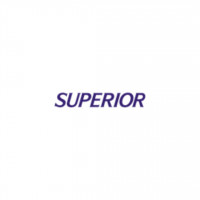Get M12 CCTV and Line Scan Camera Lens in China | Superior CCTV

Strong 8k brings an ultra-HD IPTV experience to your living room and your pocket.
What are line-scan camera lenses and their applications?
These lenses Capture high-quality images one line at a time. Which makes it very effective for high-speed and high-resolution applications. Traditional cameras capture an entire image, while line-scan cameras take images by either moving the object or the camera itself. This mechanism gives wonderfully detailed images of moving objects. By Which a line scan camera is useful in several industries.
Manufacturing and Quality Control: In industrial management, the application of a Line Scan Camera Lens is implemented in most production lines for the aim of inspection. They can be applied in evaluating defects, measuring dimensions, and assessing the quality control at very high speed.
Textile and Printing Industries: In the textile industry, line scan cameras are used for quality fabric tracking and flaw detection. Moreover, for uniform color and pattern, they are utilized. Primarily, their use is seen in the checking of printed materials by the printing industries.
Food Processing: These cameras are also applied in the food processing industry. Whereby the packaging of the food is screened to ensure no other foreign objects exist.
Key Features of the Lenses for Line Scan Camera
High Resolution: It is made with all the features that are necessary for a high-resolution image. Resolution is very crucial in observing something in great detail and interpreting it.
Speed: Line scan camera lenses are also optimized in terms of speed so that images can be captured quickly without lowering quality.
Specialized Optics: Most of the line-scan lenses feature specialized optics in order to ascertain the reduction of distortion and how vivid the images would be.
Versatility: They can be used on different sensor sizes as well as different applications. Thereby providing adaptability in most scenarios.
What is the M12 CCTV Lens?
An M12 CCTV lens is a small lens that is used for surveillance cameras. 'M12' is the diameter of the lens mount. Which amounts to 12 mm. M12 CCTV lens is thus being used in almost all CCTV systems, with a variety of different types of lenses.
Security Cameras: These lenses are used in the indoor and outdoor video surveillance security cameras. They provide a wide observation field angle along with good-quality pictures.
IoT and Smart Devices: With the discovery of smart devices, M12 lenses are also applied with IoT, which allows for real-time monitoring and data collection.
How Can You Select the Right Lens for Your Applications?
Application Requirement: Be very clear about what your application needs. For example, if you require high-speed imaging for quality control during a production line, a line scan camera lens is ideal. For general monitoring of a retail outlet, an M12 CCTV Lens will do.
Resolution and Image Quality: Consider the resolution and image quality needed for your application. A line-scan lens often presents a much higher resolution. Which is critical in a detailed inspection. M12 lenses are sufficient to deliver satisfactory quality in most surveillance applications.
Field of View: CCTV cameras surveilling greater open spaces will have a wider field of view. Some line-scan cameras can be focused on with a narrower field of view to inspect regions.
Environmental Conditions: You might want a lens that can handle some pretty tough and harsh conditions. Perhaps high humidity or extreme temperatures. Many lenses are designed with protective coatings or housings that will better withstand environmental challenges.
To obtain an appropriate lens for requirements in either imaging or surveillance. It is valuable to understand the differences between line scan camera lenses and M12 CCTV lenses. Each provides different advantages and applications, but each is useful depending on the industry needed. Important deciding factors, including application requirements, resolution, field of view, environmental conditions, and budget, all bring about the design of an effective camera system.
Note: IndiBlogHub features both user-submitted and editorial content. We do not verify third-party contributions. Read our Disclaimer and Privacy Policyfor details.


